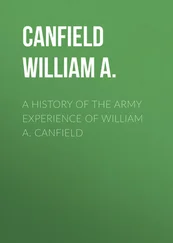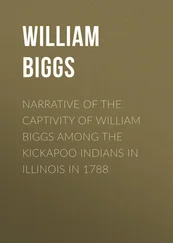William Doolittle - Inventions in the Century
Здесь есть возможность читать онлайн «William Doolittle - Inventions in the Century» — ознакомительный отрывок электронной книги совершенно бесплатно, а после прочтения отрывка купить полную версию. В некоторых случаях можно слушать аудио, скачать через торрент в формате fb2 и присутствует краткое содержание. Жанр: foreign_antique, foreign_prose, на английском языке. Описание произведения, (предисловие) а так же отзывы посетителей доступны на портале библиотеки ЛибКат.
- Название:Inventions in the Century
- Автор:
- Жанр:
- Год:неизвестен
- ISBN:нет данных
- Рейтинг книги:5 / 5. Голосов: 1
-
Избранное:Добавить в избранное
- Отзывы:
-
Ваша оценка:
- 100
- 1
- 2
- 3
- 4
- 5
Inventions in the Century: краткое содержание, описание и аннотация
Предлагаем к чтению аннотацию, описание, краткое содержание или предисловие (зависит от того, что написал сам автор книги «Inventions in the Century»). Если вы не нашли необходимую информацию о книге — напишите в комментариях, мы постараемся отыскать её.
Inventions in the Century — читать онлайн ознакомительный отрывок
Ниже представлен текст книги, разбитый по страницам. Система сохранения места последней прочитанной страницы, позволяет с удобством читать онлайн бесплатно книгу «Inventions in the Century», без необходимости каждый раз заново искать на чём Вы остановились. Поставьте закладку, и сможете в любой момент перейти на страницу, на которой закончили чтение.
Интервал:
Закладка:
In the United States, inventions in mowers and reapers began to make their appearance about 1820. In 1822, Bailey was the first to patent a mowing machine. It was a circular revolving scythe on a vertical axis, rotated by gearing from the main axle, and so that the scythe was self-sharpened by passing under a whet-stone fixed on an axis and revolving with the scythe and was pulled by a horse in front. In 1828, Lane, of Maine, combined the reaper and thresher. In 1831, Manning had a row of fingers and a reciprocating knife, and in 1833, Schnebly introduced the idea of a horizontal endless apron on which the grain fell, constructed to travel intermittently so as to divide the grain into separate parts or gavels, and deliver the gavels at one side. Hussey, of Maryland, in 1833, produced the most useful harvester up to that time. It had open guard fingers, a knife made of triangular sections, reciprocating in the guard, and a cutter-bar on a hinged frame.
Then came the celebrated reaper of McCormick, of Virginia, in 1834, and his improvements of 1845-1847, and by 1850 he had built hundreds of his machines. Other inventors, too numerous to mention, from that time pushed forward with their improvements. Then came many public trials and contests between rival manufacturers and inventors.
One of the earliest and most notable was the contest at the World's Fair, in London, in 1851. This exhibition, the first of the kind the world had seen, giving to the nations taking part such an astonishing revelation of each other's productions, and stimulating in each such a surprising growth in all the industrial and fine arts, revealed nothing more gratifying to the lover of his kind than those inventions of the preceding half-century that had so greatly lifted the farm labourer from his furrow of drudgery.
Among the most conspicuous of such inventions were the harvesters. Bell's machine, previously described, and Hussey's and McCormick's were the principal contesting machines. They were set to work in fields of grain, and to McCormick was finally awarded the medal of honour.
This contest also opened the eyes of the world to the fact that vast tracts of idle land, exceeding in extent the areas of many states and countries, could now be sown and reaped – a fact impossible with the scythe and the sickle. It was the herald of the admission into the family of nations of new territories and states, which, without these machines, would unto this day be still wild wildernesses and trackless deserts.
This great trial also was followed by many others, State and International. In 1852, there was in the United States a general trial of reapers and mowers at Geneva, New York; in 1855, at the French Exposition, at Paris, where again McCormick met with a triumph; in 1857, at Syracuse, New York, and subsequently at all the great State and International Expositions. These contests served to bring out the failures, and the still-existing wants in this line of machinery. The earlier machines were clumsy. They were generally one-wheeled machines, lacked flexibility of parts and were costly. They cut, indeed, vast tracts of grain and grass, but the machines had to be followed by an army of men to bind and gather the fallen grain. This army demanded high wages and materially increased the cost of reaping the crop, and sadly diminished the profits.
When the Vienna Exposition, in 1873, was held, a great advance was shown in this and all other classes of agricultural machinery. Reapers and mowers were lighter in construction, and far less in cost, and stronger and more effective in every way. The old original machines of McCormick on which he had worked for twenty years prior to the 1851 triumph, had been succeeded by another of his machines, on which an additional twenty years of study, experiment and improvement had been expended. An endless number of inventors had in the meantime entered the lists. The frame, the motive gearing, the hinged cutter-bar and knives, the driver's seat, the reel, the divider, for separating the swath of grain to be cut from the uncut, the raising and depressing lever, the self-raker, and the material of which all the parts were composed had all received the greatest attention, and now was awaiting the coming of a perfect mechanical binder that would roll the grain on the machine into a bundle, automatically bind it, and drop the bound bundles on the ground. The latter addition came in an incomplete shape to Vienna. The best form was a crude wire binder. In 1876 at the Centennial Exhibition at Philadelphia, the mowers and reapers blossomed still more fully, but not into full fruition; for it was not until two or three years thereafter that the celebrated twine binders, which superseded the wire, were fully developed.
Think of the almost miraculous exercise of invention in making a machine to automatically cut the grain, elevate it to a platform, separate and roll it into sheaves, seize a stout cord from a reel, wrap it about the sheaf, tie a knot that no sailor could untie, cut the cord, and throw the bound sheaf to one side upon the ground!
So great became the demand for this binders' twine that great corporations engaged in its manufacture, and they in turn formed a great trust to control the world's supply. This one item of twine, alone, amounted to millions of dollars every year, and from its manufacture arose economic questions considered by legislators, and serious litigation requiring the attention of the courts.
At this Centennial Exhibition, besides twenty or more great manufacturing firms of the United States who exhibited reapers and mowers, Canada, far-away Australia, and Russia brought each a fine machine of this wonderful class. And not only these countries, but nearly all of Europe sent agricultural machines and implements in such numbers and superior construction that they surpassed the wildest dreams of the farmer of a quarter of a century before.
Up to this time, about eleven thousand patents have been granted in the United States, all presumably on separate improvements in mowers and reapers alone. This number includes, of course, many patents issued to inventors of other countries.
Before leaving this branch of the subject the lawn-mower should not be overlooked, with its spiral blades on a revolving cylinder, a hand lever by which it can be pushed over a lawn and the grass cut as smooth as the green rug upon a lady's chamber.
It is the law of inventions that one invention necessitates and generates another. Thus the vastly increased facilities for cutting grass necessitated new means for taking care of it when cut. And these new means were the hay tedder to stir it, the horse hay-rake, the great hay-forks to load, and the hay-stackers. Harvesters for grass and grain have been supplemented by Corn, Cotton, Potato and Flax Harvesters.
The threshing-floor still resounds to the flail as the grain is beaten from the heads of the stalks. Men and horses still tread it out, the wooden drag and the heavy wain with its gang of wheels, and all the old methods of threshing familiar to the Egyptians and later among the Romans may still be found in use in different portions of the world.
Menzies of Scotland, about the middle of the eighteenth century, was the first to invent a threshing machine. It was unsuccessful. Then came Leckie, of Stirlingshire, who improved it. But the type of the modern threshing machine was the invention of a Scotchman, one Meikle, of Tyningham, East Lothian, in 1786. Meikle threw the grain on to an inclined board, from whence it was fed between two fluted rollers to a cylinder armed with blades which beat it, thence to a second beating cylinder operating over a concave grating through which the loosened grain fell to a receptacle beneath; thence the straw was carried over a third beating cylinder which loosened the straw and shook out the remaining grain to the same receptacle, and the beaten straw was then carried out of the machine. Meikle added many improvements, among which was a fan-mill by which the grain was separated and cleaned from both straw and chaff. This machine, completed and perfected about the year 1800, has seen no departure in principle in England, and in the United States the principal change has been the substitution of a spiked drum running at a higher speed for Meikle's beater drum armed with blades.
Читать дальшеИнтервал:
Закладка:
Похожие книги на «Inventions in the Century»
Представляем Вашему вниманию похожие книги на «Inventions in the Century» списком для выбора. Мы отобрали схожую по названию и смыслу литературу в надежде предоставить читателям больше вариантов отыскать новые, интересные, ещё непрочитанные произведения.
Обсуждение, отзывы о книге «Inventions in the Century» и просто собственные мнения читателей. Оставьте ваши комментарии, напишите, что Вы думаете о произведении, его смысле или главных героях. Укажите что конкретно понравилось, а что нет, и почему Вы так считаете.












